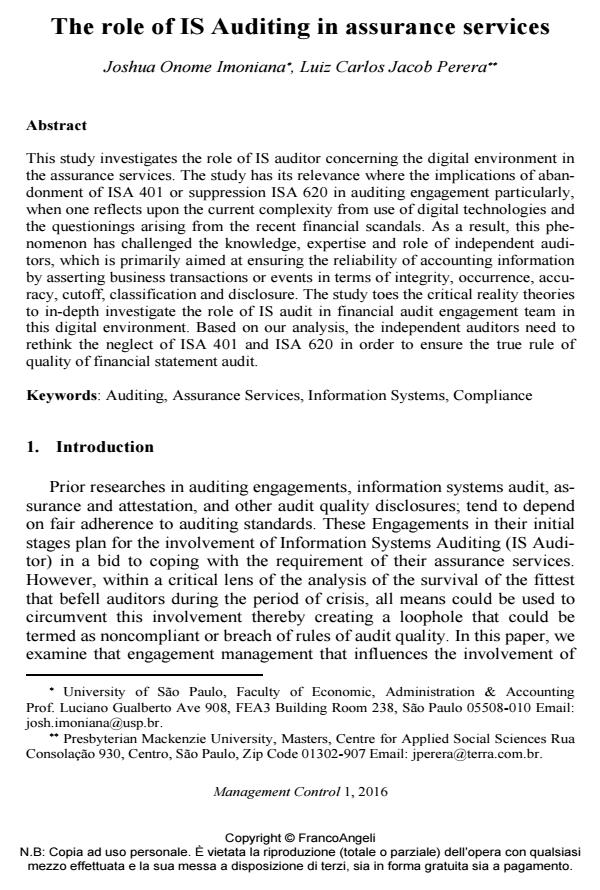The role of IS Auditing in assurance services
Titolo Rivista MANAGEMENT CONTROL
Autori/Curatori Joshua Onome Imoniana, Luiz Carlos Jacob Perera
Anno di pubblicazione 2016 Fascicolo 2016/1
Lingua Inglese Numero pagine 17 P. 17-33 Dimensione file 81 KB
DOI 10.3280/MACO2016-001002
Il DOI è il codice a barre della proprietà intellettuale: per saperne di più
clicca qui
Qui sotto puoi vedere in anteprima la prima pagina di questo articolo.
Se questo articolo ti interessa, lo puoi acquistare (e scaricare in formato pdf) seguendo le facili indicazioni per acquistare il download credit. Acquista Download Credits per scaricare questo Articolo in formato PDF

FrancoAngeli è membro della Publishers International Linking Association, Inc (PILA)associazione indipendente e non profit per facilitare (attraverso i servizi tecnologici implementati da CrossRef.org) l’accesso degli studiosi ai contenuti digitali nelle pubblicazioni professionali e scientifiche
This study investigates the role of IS auditor concerning the digital environment in the assurance services. The study has its relevance where the implications of abandonment of ISA 401 or suppression ISA 620 in auditing engagement particularly, when one reflects upon the current complexity from use of digital technologies and the questionings arising from the recent financial scandals. As a result, this phenomenon has challenged the knowledge, expertise and role of independent auditors, which is primarily aimed at ensuring the reliability of accounting information by asserting business transactions or events in terms of integrity, occurrence, accuracy, cutoff, classification and disclosure. The study toes the critical reality theories to in-depth investigate the role of IS audit in financial audit engagement team in this digital environment. Based on our analysis, the independent auditors need to rethink the neglect of ISA 401 and ISA 620 in order to ensure the true rule of quality of financial statement audit.
Parole chiave:Auditing, Assurance Services, Information Systems, Compliance
Joshua Onome Imoniana, Luiz Carlos Jacob Perera, The role of IS Auditing in assurance services in "MANAGEMENT CONTROL" 1/2016, pp 17-33, DOI: 10.3280/MACO2016-001002